I have empirical data of 9 sets of patients the data looks in this format
input = [10 -1 1
20 17956 1
30 61096 1
40 31098 1
50 18446 1
60 12969 1
95 7932 1
120 6213 1
188 4414 1
240 3310 1
300 3329 1
610 2623 1
1200 1953 1
1800 1617 1
2490 1559 1
3000 1561 1
3635 1574 1
4205 1438 1
4788 1448 1
];
calibrationfactor_wellcounter =1.841201569;
Here, the first column describes values of time and next one is concentration. As you can see, the concentration increases until a certain time and then decreases exponentially with increase in time.
If I plot the following characteristics, I obtain following curve 
I would like to create a script which represents the same behavior cited above. following is the script which i have formulated where concentration linearly increases till certain time period and aftermath it decays exponentially, but when i plot this function i am obtaining linear characteristics , kindly let me know if my logic is appropriate
function c_o = Sample_function(td,t_max,a1,a2,a3,b1,b2,b3)
t =(0: 100 :5000); % time of the sample post injection in mins
c =(0 : 2275.3 :113765);
A_max= max(c);%Max value of Concentration (Peak of the curve)
c_o = zeros(size(t));
c_o(t>td & t<=t_max) = A_max*(t(t>td & t<=t_max)-td);
c_o(t>t_max)=(a1*exp(-b1*(t(t>t_max)-t_max)))+(a2*exp(-b2*(t(t>t_max)-t_max)))+(a3*exp(-b3*(t(t>t_max)-t_max)));
fprintf('plotting Data ...\n');
hold on;
%figure ;
plot(c_o,'erasemode','background');
xlabel('time of the sample in minutes ');
ylabel('Activity of the sample Ba/ml');
title (' Input function: Activity sample VS time ');
pause;
end
The figure i obtained is  In the above plot the decay is linear instead of exponential, let me know how to obtain 3rd order decay this is the line of code i have written to obtain 3rd order decay
In the above plot the decay is linear instead of exponential, let me know how to obtain 3rd order decay this is the line of code i have written to obtain 3rd order decay
c_o(t>t_max)=(a1*exp(-b1*(t(t>t_max)-t_max)))+(a2*exp(-b2*(t(t>t_max)-t_max)))+(a3*exp(-b3*(t(t>t_max)-t_max)));


